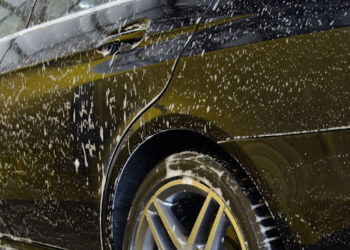Planning to take on a home renovation or construction project? Here comes the tricky part of figuring out how much the whole thing is going to cost you. Estimating construction costs accurately is key to keeping your project on budget. The good news is, there are some tried-and-true rules of thumb you can use to get pretty close to the final price tag before you even lift a hammer. In this article, we’ll walk you through the basics of construction estimating services using the rule of thumb method. By the end, you’ll have a solid sense of the major costs involved in your project and will feel confident that you aren’t leaving any big surprises out of the budget. Ready to learn how to estimate construction costs like a pro? Let’s dive in.
Material Quantities: Calculate How Much You Need
To accurately estimate how much material you need for a construction project, you have to do some calculating. The rule of thumb is to overestimate rather than underestimate. It’s always better to have leftovers than running short.
Lumbar Estimations
For lumber, measure the linear feet needed for framing walls, roofs, floors, etc. Then add at least 10% as waste allowance. Buy a little extra in case you make mistakes or need to replace any damaged boards.
Concrete Estimations
When estimating concrete, calculate the volume in cubic yards for footings, slabs, and any poured walls. A good practice is to add 5 to 10% to that figure. It’s better to overpour than have to order another truckload.
Miscellaneous Estimations
For siding, roofing, flooring, drywall, and insulation, measure the square footage of the surfaces to be covered and add 15% for waste and seams. Round up to the next highest increment that the materials come in.
The Rule of Thumb
When in doubt, it is better to overestimate. The few extra dollars you spend will give you peace of mind and ensure you have enough materials to finish the job. No one ever complains about having leftovers.
Labor Requirements: Plan Your Crew
To get timely, and under budget Construction estimating services for your project you’ll need the right crew. That means planning your labor requirements carefully.
First, determine how many workers you’ll need for each stage of the project. For example, the foundation and framing stages typically require larger crews, while the finishing work requires fewer workers. As a rule of thumb, estimate:
- 3-5 workers for small residential projects
- 10-15 workers for most commercial builds
- 20+ workers for large industrial projects
Next, figure out the key roles and responsibilities. You’ll want experienced foremen and supervisors to lead the work, as well as specialized tradespeople like electricians, plumbers, and HVAC technicians. Don’t forget helpers and general laborers for tasks like cleaning, moving materials, and assisting the tradespeople.
Also, build some buffer time into your schedule for unexpected issues. Construction projects often encounter delays, so adding an extra 10-15% to your labor estimates is a good safety net.
Timelines and Schedules: Develop a Realistic Estimate
To develop an accurate construction estimate, you need to create a realistic schedule and timeline. Many projects experience delays and go over budget due to poor planning and unrealistic time frames.
Determine Task Durations
For each task in the project, determine how long it will reasonably take to complete. Factor in potential delays from weather, materials delivery, or labor shortages. It’s always better to overestimate task durations. Speak with contractors and suppliers to get their input on timeframes for their work. They have experience that can provide invaluable insight into potential issues.
Sequence Tasks Logically
Lay out all the tasks in the proper order to complete the project efficiently. Some tasks depend on the completion of others, so sequence them logically based on these dependencies. Identify which tasks can be completed concurrently to optimize the schedule.
Review and Refine
Have multiple stakeholders review the proposed schedule and provide feedback. Look for any unrealistic durations or illogical task sequencing. Make revisions as needed to develop the most realistic and workable schedule possible.
Costs and Expenses: Account for All Variables
When calculating Construction takeoff services costs, it’s easy to overlook certain expenses that can impact your budget. To get an accurate estimate, you need to account for all variables—both direct and indirect costs.
Labor
The largest cost for any construction project is labor. Make sure you factor in costs for contractors, subcontractors, and any temporary workers needed. Account for total work hours, overtime, and benefits. Labor costs can be 50-60% of a project’s total budget.
Materials
The materials and supplies for your project also need to be estimated accurately. Do research on current prices for things like lumber, concrete, wiring, plumbing, flooring, lighting fixtures, and hardware. Factor in extra materials for waste and changes. Price fluctuations can also impact your materials budget, so build in a 10% contingency fund.
Permits and Fees
Don’t forget the costs for permits, licenses, inspections, zoning applications, and any impact fees. These expenses are often overlooked but necessary for legal compliance. Check with your local building department for rates and fees associated with your specific project.
Equipment
If heavy equipment like cranes, bulldozers, or excavators are needed, you’ll need to factor in costs for renting and operating the equipment. You may also need tools, generators, storage containers, scaffolding, and safety gear.
Contingencies and Unknowns: Leave Room for the Unexpected
When estimating construction costs, it’s important to account for unforeseen circumstances. No matter how well you plan, there are always unknowns that can impact your budget. Build in adequate contingencies to avoid going over budget or cutting corners.
Labor and Materials
Cost overruns often come from labor and materials. Allow an extra 10-15% for labor in case tasks take longer than expected. Material prices can also fluctuate, so add 5-10% to your materials budget. It’s better to overestimate than run out of funding.
Weather Delays
Weather has a huge impact on construction. Add buffer days for rain, snow, or extreme heat. As a rule of thumb, add 1 day for every 10 days of work. For example, a 3-month project would budget for 9-12 extra days. Weather delays mean paying workers and equipment rentals for non-productive time.
Permits and Inspections
Local governments control construction through permits and inspections. Build in time for applications, reviews, re-submissions, and inspections at each stage. Fees for these services should also be included in your budget. Lack of planning here can stall your project for weeks or months.
Unforeseen Conditions
You never know what’s behind existing walls or underground until construction begins. Leave room for surprises like structural issues, asbestos, faulty plumbing or wiring that requires remediation. A good rule of thumb is to add 10% to your budget for unforeseen conditions. It’s better to not need this funding than to be caught without it.
Conclusion
So there you have it, a quick guide to using the rule of thumb for getting a rough estimate of construction costs. While these rules of thumb won’t give you an exact dollar figure, they provide a good starting point so you can budget accordingly and avoid any major surprises down the road. Projects involving construction estimating services always end up costing more than you anticipate, but with the rule of thumb in your back pocket, at least you’ll have a sense of the ballpark. Now you can move forward with your renovation or new build with confidence, knowing you’ve prepared for the costs – even if they end up a bit higher in the end. The most important part is that you’ll end up with a finished product you can enjoy for years to come.







